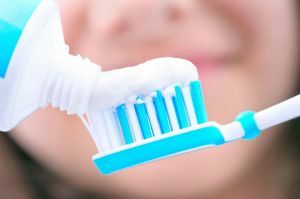 Everyone is dreaming of having beautiful and white teeth. White teeth are a sign of a healthy body. A wide open smile helps to locate others around. In addition, it is a sign of prosperity and success.
Everyone is dreaming of having beautiful and white teeth. White teeth are a sign of a healthy body. A wide open smile helps to locate others around. In addition, it is a sign of prosperity and success.
Back in ancient times, people cleaned their teeth with ashes, soda or chalk. Now there are many ways to give dental enamel dazzling whiteness, both at home and in the clinic.
The easiest and most accessible option for everyone is to buy a whitening toothpaste.
Of course, you should not expect from the paste the same degree of bleaching, as for example, from chemical clarification or the procedure carried out with ultraviolet, but 1-2 shades make the lighter shade of the tooth with the help of high-quality pastes very real.
Contents
- Principle of influence
- Mechanical effect
- Result of application of chemistry
- Prophylaxis
- Harm and use of whitening
- RDA - abrasivity index
- What is in the composition?
- Please note!
- Clinical experiments
- Well-thought-out choice
- Folk top-7
- Practical experience of using
Principle of exposure
Teeth whitening tooth whitening toothbrushes can be mechanical and chemical.
Mechanical Effects
These agents contain large enamel enamel particles( silica or calcium carbonate) that remove yellow plaque. The principle of their work can be compared with a facial scrub.
Naturally, large particles of abrasive are more effective, but their effect on enamel is stronger.
More recently, the safest materials have been found for mechanical bleaching. 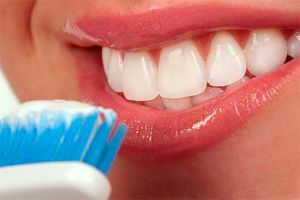
This abrasive is papain obtained from papaya fruits and bromelain, made from pineapple juice, which brightens the enamel by dissolving the protein from which the plaque is composed.
Pastes with natural abrasives, for example, sea salt, are very aggressive.
Result of application of chemistry
Such pastes act on plaque and enamel with the help of hydrogen peroxide or a more modern variant - urea, clarifying plaque.
In addition, there are pastes with other chemicals that lighten the teeth by removing the pellicle. This is the thin organic film that appears on the tooth in the process of life and protects the tooth from the effects of microorganisms on it.
Prophylactic agents
Preventive whitening pastes prevent the formation of plaque after professional clinical cleaning.
Used to prolong the effect due to crystallization inhibitors. Simply put, do not give dental deposits to form on the tooth.
Harm and benefit of whitening
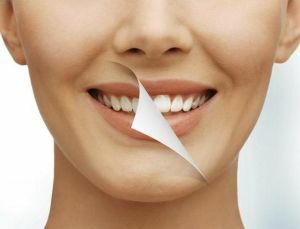 It should be noted that in addition to the fact that the paste can make teeth and gums excessively sensitive and change the color of the fillings, aggressive abrasives can change even the structure of the tooth and thinen its enamel.
It should be noted that in addition to the fact that the paste can make teeth and gums excessively sensitive and change the color of the fillings, aggressive abrasives can change even the structure of the tooth and thinen its enamel.
Individual components of pastes can cause allergy and swelling of the gums.
Do not use toothpastes for bleaching people with periodontal disease and dental caries, as applying them can lead to deterioration of the teeth.
At the same time, the paste not only can return a natural shade to the teeth, but also dissolve tartar. To do this, the composition should include polyphosphates, but such pastes are again not recommended for people with hypersensitive teeth.
RDA - abrasivity index
Abrasive particles can be from 20% to 40% of the toothpaste composition. Abrasives are the smallest particles that polish the tooth enamel and thus brighten it. RDA is an index determining the quality and quantity of abrasive, as well as the degree of cleaning and the effect of toothpaste on tooth enamel.
The following RDA indices differ:
- 25 - suitable for particularly sensitive teeth;
- 25-50 - contain children's toothpaste;
- 75 - include pastes for daily use;
- 80-150 - pastes clarifying teeth of usual sensitivity;
- 150 and above - pastes for smokers and coffee lovers.
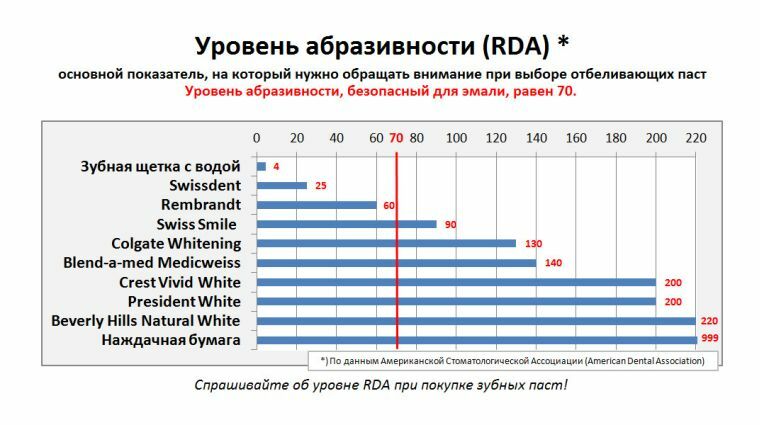
What is in the composition?
In addition to bleaching agents( abrasive or chemical components), the following components are distinguished in toothpastes:
- Foaming agent - rinses plaque and dirt with the use of foam, for example sodium lauryl sulfate
- The dye and filler - gives the paste a hue and density, for example algae extract
- Taste additive - refreshes the mouth, gives fresh breath, and the paste itself has any taste. Usually, mint, menthol and lemon are used for this.
- Preservatives - do not allow the paste to deteriorate, develop in it microorganisms
- Minerals - prevent the growth of bacteria and plaque, strengthen the tooth. The most popular mineral supplements are phosphorus, calcium, fluorine.
Please note!
When buying a good whitening toothpaste, the following components should be avoided:
- Pastes based on sodium lauryl sulfate and sodium bicarbonate are the most common, but harmful to the body, as its particles accumulate in the tissues of the heart, liver and brain and are not completely removed from the body,weaken the immune system. It is worth choosing a paste without SLS.
- Titanium dioxide is also a detrimental element for the teeth, which destroys the cellular membranes, it is not necessary to choose a paste containing this component.
- The content of hydrogen peroxide should not be higher than 0.1%, otherwise the hypersensitivity of teeth will appear together with bleaching.
- Pastes with triclosan are also better avoided. Triclosan is an antibiotic that destroys not only harmful bacteria, but also those necessary for the human body, which breaks the microflora in the mouth.
- Fluoride - a component that heals caries and microcracks in the teeth, with excess in the body, on the contrary, leads to the destruction of teeth and bones, causes fluorosis and impairment in the brain tissues. Fluoride is found in many foods, so in the toothpaste it is simply superfluous.
- Aluminum lactate is another unwanted ingredient that settles in the tissues of organs and leads to memory impairment and decreased brain activity.
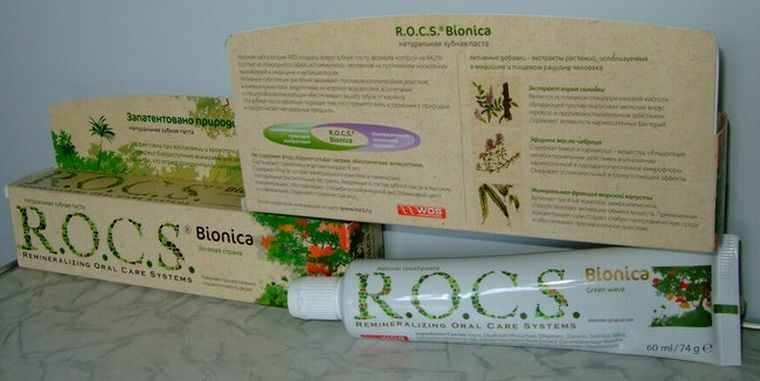
Toothpaste without sodium lauryl sulfate
Clinical experiments
The experiment was carried out by the ROCS mark, the essence of which was that 3 groups of 20 people without periodontal diseases, for a month in the morning and in the evening, brushed their teeth with whitening toothpaste.
In order for all subjects to be on equal terms, the same toothbrushes were issued and a special diet was prescribed, excluding products staining tooth enamel. Also, all the subjects underwent professional dental cleaning.
The first group used a paste that clarifies the enamel by combining calcium with phosphorus, the second one with aluminum lactate paste, and the third with carbamide peroxide.
After the test period, 80% of the first group, 35% of the second and 85% of the third group noticed a visual effect of whitening, as well as a feeling of "smooth" teeth.
Based on the results of the evaluation of the special apparatus, the spectrophotometer, the teeth of the subjects of the first group became lighter in 75% of cases, in the second - in 45%, in the third - by 80%. On average, the subjects' teeth became whiter by 2 tones.
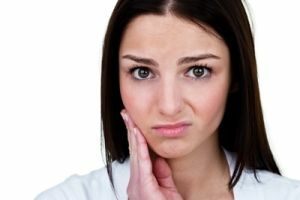 The best results were shown with pasta with carbamide peroxide, the teeth of the participants using the paste on its basis became whiter by 3 tones, but the number of subjects with hypersensitivity of teeth increased 2 times.
The best results were shown with pasta with carbamide peroxide, the teeth of the participants using the paste on its basis became whiter by 3 tones, but the number of subjects with hypersensitivity of teeth increased 2 times.
Two months after the end of the experiment, a second examination was conducted, the results of which showed that when the use of the paste was stopped, the effect of whitening became weaker. When examined after three months, the whitening effect completely disappeared.
Well-thought-out choice of
Decide on which toothpaste best whitens teeth, but having studied the rating and consumer feedback about whitening pastes, you can make your choice deliberately.
Folk Top-7
The most effective toothpaste with whitening effect:
- Splat Extreme White .A Russian-made paste that combines 2 whitening ingredients - papain and polydon, in addition to the
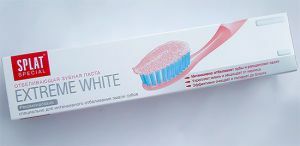 , is suitable for sensitive teeth and even vice versa, reduces their sensitivity. Clarifies the enamel by 1.5 tones in 30 days.
, is suitable for sensitive teeth and even vice versa, reduces their sensitivity. Clarifies the enamel by 1.5 tones in 30 days. - Crest 3D White Luxe Glamorous White .Pasta, which is recommended by Russian and US dentists. Promises the effect of professional whitening on 2 tones. Removes up to 90% of stains due to sodium pyrophosphate, but is not suitable for sensitive teeth. Does not contain SLS.
- Rembrandt Antitobacco and coffee .Pasta gently whitens teeth, due to cytroxaine - a symbiosis of papain with a mild abrasive. Promises bleaching on 2 tones. Mineralizes tooth enamel, but contains fluoride.
- Lacalut White .It bleaches due to silicon dioxide and sodium pyrophosphate, a rather aggressive paste containing also "forbidden" titanium dioxide and aluminum lactate. But it contains components that destroy not only plaque, but also tartar. Lightens enamel, on average by 2 tones.
- R.O.C.S.Sensational Whitening .Clarifies the enamel due to silica and bromelain. Does not contain fluoride, parabens and SLS.Strengthens enamel with calcium glycerophosphate. The only minus of the composition is silicon dioxide.
- PresiDENT White Plus .Strongly abrades enamel, but it gives a quick and noticeable effect. Contains almost all "forbidden" elements from titanium dioxide to sodium lauryl sulfate. It can also cause an allergic reaction due to methylparaben in the formulation.
- Blend-a-Med 3D White Luxe Glamor .Removes plaque due to pyrophosphates and silicic acid. Does not contain SLS and parabens. The effect of bleaching at 1-2 tone.
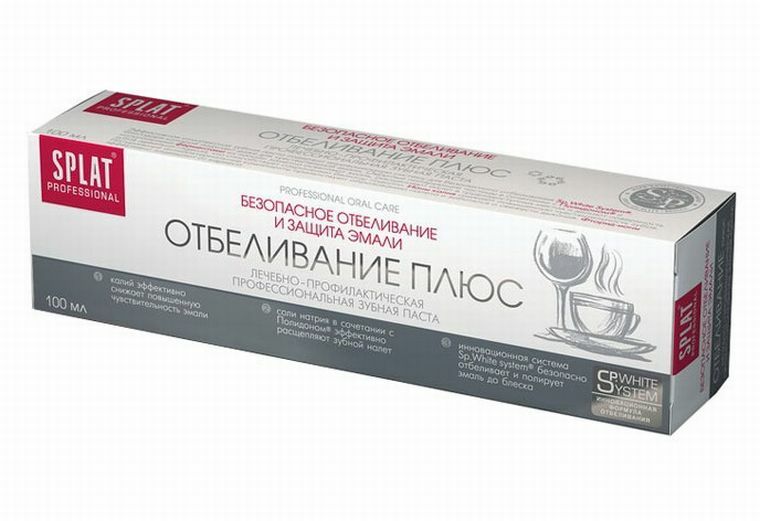
Practical experience of using
The word to consumers.
Used paste Blend-a-Med 3D White month, the effect is, but not strong. But there is no harm.
Marina, 26 years old
Vasily, 34
I am a dentist and advise my clients to use Splat paste. It really gently removes plaque without damaging the enamel and gives an excellent visual effect of a snow-white smile.
Natalia, 32 years old
I always dreamed of a "Hollywood smile", but by nature my teeth are not particularly white. I tried a bunch of whitening pastes, but I did not see the special effect, as long as I clean it - yes, my teeth are slightly lighter, and when you stop, everything goes back, if it does not get worse. But I'll still try new products, I really want white teeth.
Tatiana, 19 years old
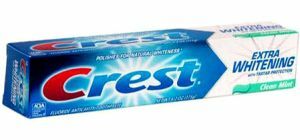 In general, the use of whitening pastes makes sense when the color of the enamel is initially quite light and there are no diseases of the oral cavity.
In general, the use of whitening pastes makes sense when the color of the enamel is initially quite light and there are no diseases of the oral cavity.
You should also pay attention to the composition of the paste and choose a more gentle whitening, albeit slower. Do not think that the paste will solve the problem right away, but it will definitely help prolong the effect of professional cleaning and clinical bleaching.
